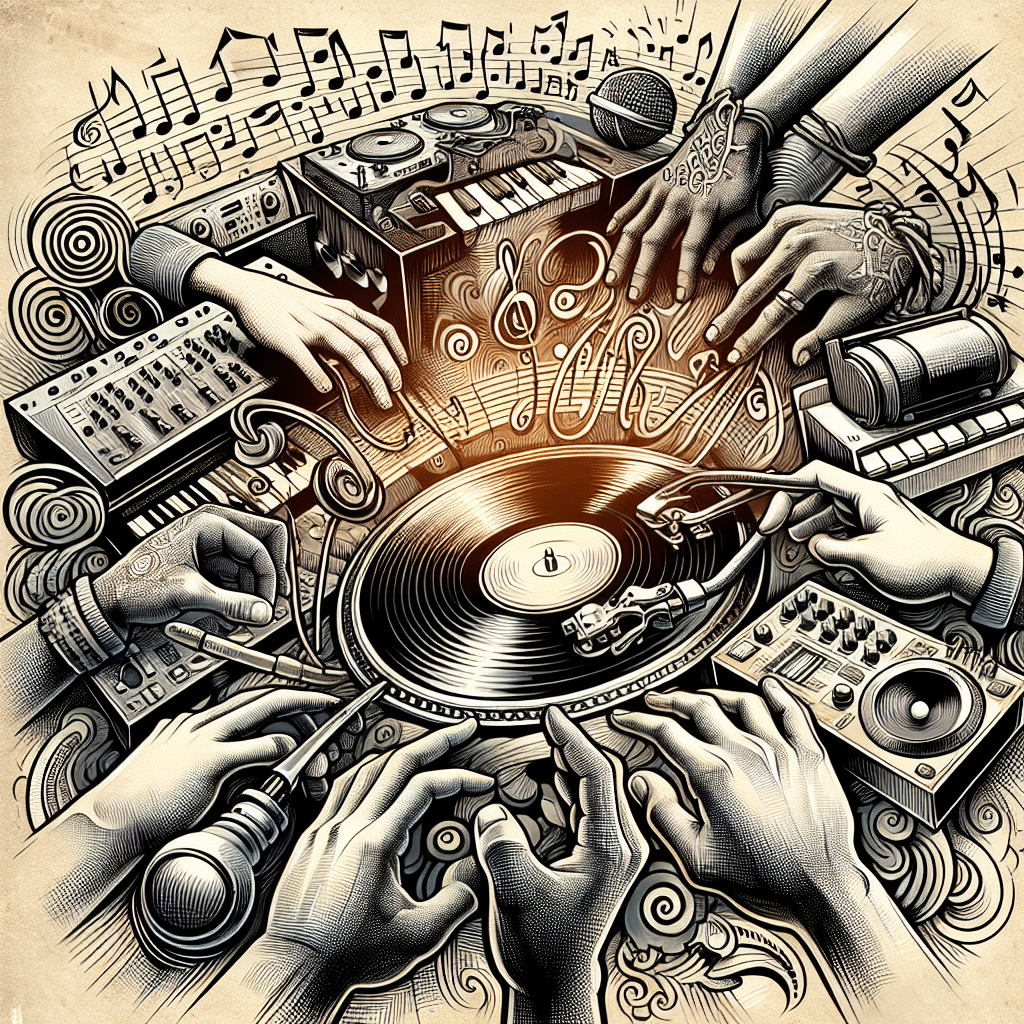Rhythm and Rhyme: How Hip Hop Beats Shape the Genre's Identity

Hip hop is more than just a musical genre; it is a cultural movement that encompasses art, dance, fashion, and more. At the very heart of hip hop lies the intricate dance between rhythm and rhyme, a combination that not only shapes the sound of the music but also defines the identity of the genre. In this article, we will explore how rhythm and rhyme work together in hip hop, how they contribute to the genre's distinct identity, and why they are crucial to the overall experience of hip hop culture.
The Foundation of Hip Hop: Beats and Rhythm
Understanding Beats
In hip hop, the beat is the backbone of the music. It is the rhythm that drives the song forward, the pulse that listeners feel in their bones. The beat is typically produced using a mix of percussion, bass lines, and sampled sounds taken from various sources, including funk, soul, rock, and jazz. The unique combination of these elements contributes to the genre's diversity and complexity.
The Role of Rhythm
See Also: Rhyme and Reason: Analyzing the Evolution of Hip Hop Lyricism
Rhyme and Reason: Analyzing the Evolution of Hip Hop LyricismRhythm is not limited to the instrumental beats; it extends to the way artists deliver their lyrics. In hip hop, rhythm is about timing and flow. A rapper can manipulate rhythm by changing their vocal delivery, which includes variations in speed and cadence, to create a dynamic and engaging performance. The interplay between the beat and the flow of the lyrics generates a feeling of energy and movement, making hip hop music infectious and compelling.
The Influence of Drum Patterns
Drum patterns are an essential component of hip hop beats. The classic breakbeat, for instance, has become synonymous with the genre, providing a foundation for countless tracks. The use of hi-hats, snares, and kicks not only creates a groove but also sets the tone for the lyrical delivery. Rappers often utilize the intricate rhythms within the beat to accentuate their narrative, emphasizing certain words or phrases that resonate with listeners.
Rhyme: The Craft of Lyricism
The Importance of Rhyme Schemes
Rhyme is integral to hip hop’s lyrical identity. The use of rhyme schemes—patterns of sounds that correspond within lines or verses—allows artists to craft intricate and lyrical narratives. Various forms of rhyme are prevalent in hip hop, from simple end rhymes to more complex internal rhymes, multisyllabic rhymes, and slant rhymes. The mastery of these techniques facilitates a unique style that distinguishes an artist's voice and message.
See Also: Rap Revolution: Introducing the New Wave of Artists and Their Breakout Tracks!
Rap Revolution: Introducing the New Wave of Artists and Their Breakout Tracks!Poetic Devices in Hip Hop
Hip hop artists often incorporate various poetic devices, such as alliteration, assonance, and metaphors, to enhance the richness of their lyrics. These techniques not only provide a musical quality to the words but also add layers of meaning, allowing listeners to engage with the content on multiple levels. The merging of linguistics and rhythm creates a sophisticated art form that challenges the listener intellectually while providing enjoyment.
Storytelling Through Rhyme
One of the most compelling aspects of rhyme in hip hop is its role in storytelling. Many artists use their experiences and environments to weave narratives that reflect social issues, personal struggles, and triumphs. The skillful interplay of rhythm and rhyme enables rappers to condense complex thoughts and emotions into memorable lines, making the songs relatable and impactful. This focus on narrative has allowed hip hop to serve as a voice for the marginalized and a platform for cultural expression.
Thematic Unity: How Rhythm and Rhyme Coalesce
See Also: Sampling in Hip Hop: Artistry or Appropriation?
Sampling in Hip Hop: Artistry or Appropriation?Creating a Cohesive Sound
Hip hop’s ability to create a cohesive sound is largely due to the interdependence of rhythm and rhyme. A well-constructed beat provides the necessary context for the lyrics, while the flow of the writer’s words adds depth to the music. This synergy not only enhances the listening experience but also allows songs to connect more profoundly with audiences. The seamless blend elevates hip hop to an art form that is celebrated for its ingenuity.
Signature Styles and Identity
Different subgenres of hip hop, such as gangsta rap, conscious rap, or trap, illustrate how rhythm and rhyme can shape an artist's identity and message. The choice of rhythm, tempo, and lyrical complexity can evoke various feelings and attitudes. For instance, trap music often features faster beats and heavy bass lines, while boom bap emphasizes a more laid-back, emotive style. These stylistic choices allow artists to carve out unique identities within the hip hop community.
Conclusion
Rhythm and rhyme are the cornerstones of hip hop music, fundamentally shaping its identity and cultural significance. The interplay of beats and lyrical delivery creates a powerful medium for storytelling and self-expression, resonating with audiences worldwide. As hip hop continues to evolve, the importance of rhythm and rhyme remains undeniable, serving as a bridge that connects diverse experiences, narratives, and voices within the genre. By celebrating and analyzing the intricate relationship between rhythm and rhyme, we can better appreciate hip hop not only as a musical genre but also as a vital cultural force.
See Also: Digging for Gold: How Vinyl Sampling Influences Modern Hip Hop Beats
Digging for Gold: How Vinyl Sampling Influences Modern Hip Hop BeatsFAQs
1. Why is rhythm important in hip hop?
Rhythm drives the music forward and influences how lyrics are delivered, creating an engaging listening experience.
2. What distinguishes hip hop lyrics from other genres?
Hip hop lyrics often utilize complex rhyme schemes, poetic devices, and personal storytelling, making them a focal point of the genre.
3. How do beats influence the overall message of a hip hop song?
The instrumentation and tempo can evoke specific emotions and set the tone for the lyrics, enhancing the song’s impact.
 The Power of Words: Exploring the Poetic Genius of Hip Hop Lyrics
The Power of Words: Exploring the Poetic Genius of Hip Hop Lyrics4. What are some common rhyme schemes used in hip hop?
Common rhyme schemes include AABB, ABAB, and internal rhymes, as well as multisyllabic and slant rhymes.
5. How has hip hop evolved in terms of rhythm and rhyme over the years?
Hip hop has seen shifts in style, sound, and lyrical complexity, leading to the emergence of various subgenres, each with its unique take on rhythm and rhyme.
If you want to know other articles similar to Rhythm and Rhyme: How Hip Hop Beats Shape the Genre's Identity you can visit the category Hip Hop.
